You might be worried about what the operation requires and how your tooth will change if your endodontist recommends root canal therapy for a front Teeth. This is a legitimate worry because your front teeth have the additional duty of defining your smile. Although the root canal procedure for front teeth is much the same as it is for other teeth, there are a few special considerations and distinctions. You might feel more at peace with your approaching root canal by comprehending each phase of the procedure.
What Is a Front Tooth Root Canal Procedure?
The nerve in the centre of the root may become exposed as a result of a chipped, fractured, or decayed tooth, resulting in uncomfortable symptoms like discomfort when eating and drinking, sensitivity to heat and cold, swelling along the gum line, and an unpleasant aftertaste.
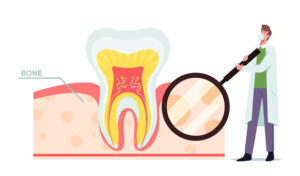
The pain and discomfort brought on by exposed nerve endings in a front tooth are intended to be eliminated by a root canal procedure. It entails extracting the diseased or damaged pulp from the tooth’s interior, washing it out, and sealing it to prevent further decay.
Why You Need a Root Canal
Of course, it is important to comprehend why a root canal is required in the first place. All teeth include hollow interior chambers called “canals” that house various tissues, including a blood supply and nerves. The tooth pulp is a collection of blood vessels, nerves, and tissue. The pulp itself can become infected as a result of a deep cavity, periodontal disease, or other circumstances that allow germs to enter a tooth’s core. This problem is what is referred to as a “abscess.” The bacteria receive essential nutrients from the pulp, enabling the infection to flourish. The only way to completely eradicate the infection is by removing the pulp from the tooth.
How to Perform Root Canal Therapy on Front Teeth
No matter what tooth is being treated, all root canal procedures begin with a hole being drilled in the tooth in order to gain access to the pulp chamber and canals inside. This hole is produced in the top, or biting surface, of back teeth like molars and premolars. However, the front teeth lack a wide biting surface that would allow for the creation of an access hole. Instead, the pulp is accessible by drilling a hole through the back of the front teeth.
Once the pulp has been reached, it is gently removed, and then using specialised tools, the hollow inside space of the tooth is cleaned, smoothed, and shaped. Gutta-percha, a naturally occurring substance that fills the empty space in the tooth and helps prevent recurrent infections, can be applied to the smoothed-out and shaped area with ease. After the canals have been sealed, the tooth’s hole is filled with a temporary substance and kept there until a crown can be set over it, which is often the last step in root canal therapy.
Benefits of a Front Tooth Root Canal
An effective alternative to a full extraction for salvaging a broken tooth is root canal therapy for root canal on front tooth. It is significantly less intrusive, more economical, and produces benefits that stay longer. The following are some of the top advantages of a root canal:
Pain and discomfort relief
The intense pain brought on by an exposed nerve in a front tooth can make simple tasks like speaking, eating, and drinking challenging. You could have a bad taste in your mouth and be sensitive to hot or cold meals and beverages.
All of these problems are instantly and permanently relieved by root canal therapy.
Effective, Economical, and Long-Lasting
The time, number of appointments, and cost of dental operations like tooth extraction, bridgework, and implants are all significantly more than those of root canal therapy.
A root canal requires up to three appointments, but with the right care and upkeep, the results of this one-time expense can last for years.
Maintained a pleasing aesthetic
Your smile’s natural aesthetic can be changed by gaps caused by missing front teeth. Your level of self-consciousness increases, and you frequently avoid social situations or cover your lips when you laugh.
The appearance of a healthy and attractive smile is restored when root canal therapy prevents the extraction of your tooth.
Non-painful Process
Many individuals are terrified and anxious about the idea of getting a root canal, yet because to modern procedures and anaesthetics, this surgery is almost painless. In order to make sure you’re entirely at peace throughout the treatment, your endodontist will employ sedation and local anaesthesia.
Additionally, there is minimal discomfort following the procedure, and you can return to your regular activities in less than a week.
However, a root canal procedure is not without drawbacks. Before choosing to get this surgery, think about the following drawbacks.
Cons of Front Teeth Root Canal Treatment
Although typically regarded as safe and effective, root canal therapy has potential dangers. These consist of:
Weakens the structure of Teeth
To remove the infected pulp, the dentist must drill into the tooth. This makes the tooth structure weaker and more brittle, making it more likely to shatter. To strengthen and safeguard the tooth, your dentist will fit a crown, although this comes at an additional cost.
Possible Infection
A root canal procedure’s effectiveness is highly dependent on your dentist’s expertise and training. It may need a more involved procedure to fix issues with poor sterilisation, insufficient cleaning, or faulty canal closure that leave it susceptible to bacteria and diseases.
During Treatment, Pain
Although most modern root canal treatments are painless, you could feel some discomfort while having the process done. You must keep your mouth open the entire time, which might tax your jaw muscles and make some people feel uneasy due to the equipment’ grinding sounds. Things can get worse if you have a sensitive gag reflex.
When carried out properly, root canal therapy may be your best option for preserving a broken front tooth. It is a realistic option for the majority of people due to its affordability, durability, and simplicity of use. However, there are other choices that might better meet your needs.
5 Effective Alternatives to a Front Teeth Root Canal
The following are five options you can take into consideration, but you should always seek the advice of a dental expert to identify the best course of action for your particular scenario. Any of the following treatments must be completed before treating gum disease, tooth decay, or infections.
1) Dental bonding
In this cosmetic operation, cracks, chips, and other tiny flaws are covered up by using a specific composite resin that is tooth-colored. The resin may stain with time and need to be replaced, but it is inexpensive and painless.
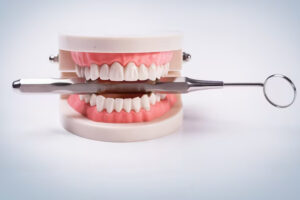
In order to evaluate the damage and decide whether this is a viable option, the dentist will take dental X-rays. The process takes less than an hour, and the outcomes seem authentic.
2) Crowns for teeth
It is constructed just for your mouth out of porcelain, ceramic, or metal. Two visits are needed for the procedure: the first is for preparation, and the second is for crown placement. You can choose to get a crown installed the same day in only one visit.
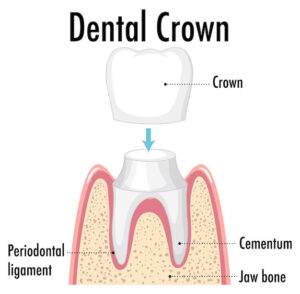
3) Veneers
Veneers are tiny, ceramic shells that are created to order to cover the front of your teeth. They are excellent for repairing chipping, cracks, discolouration, and mild misalignment because they are permanently attached to your tooth.
![]()
For correct implantation, a little portion of the natural tooth must be ground down during the process, which frequently calls for local anaesthesia.
4) Tooth removal
If the damage is too severe or beyond repair, your dentist might advise extraction as a simpler, more affordable option. To stop teeth shifting and jawbone deterioration, it entails removing the damaged tooth (or teeth) and replacing them with a bridge, denture, or implant.
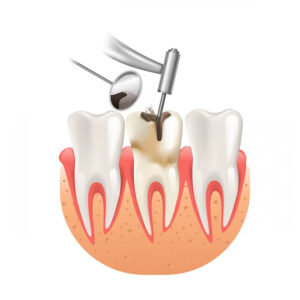
5) Implants dental
Dental implants are a long-term treatment that provides the same advantages in terms of functionality and appearance as a natural tooth. In order to serve as an artificial root to which a prosthetic tooth is attached, a titanium post is surgically placed in the jawbone. The implant-supported prosthetic can last a lifetime with proper care and mimics the appearance, feel, and functionality of a real tooth.
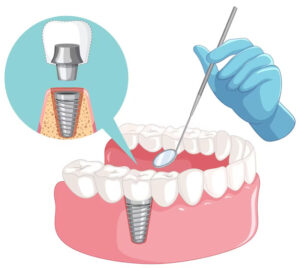
These dental procedures will help maintain your oral hygiene, boost your self-confidence, and restore the health and beauty of your front teeth. In order to find the best course of action for your needs and budget, your dentist will evaluate your existing status and consult with you.
Keep Your Smile Beautiful and Healthy
Whatever route you take, it’s crucial to work with a dental specialist who has experience, is aware of your needs, and can offer specialised care. Your dentist will evaluate the damage, address any concerns you may have, and recommend the best course of action for your particular situation.
The Dental Team’s dental specialists have a wealth of knowledge to efficiently diagnose, treat, and maintain good oral health. Make an appointment with The Dental Team right away to get started on the path to a radiant, healthy smile.



















